Last week marked 25 years of fashion weeks in India, and that would include Mumbai’s Bollywood powered Lakmé Fashion Week (LFW) and Fashion Design Council of India (FDCI) supported Delhi Fashion Week. Just for comparison: Paris is in its 52nd year, Milan in its 66th, and New York, in its current format, is in the 32nd. Its legendary figure, Fern Mallis, is often credited with creating the format upon which Indian, Moscow and Berlin built their respective fashion weeks.
India’s fashion weeks are relatively young, but not so young that we can’t be self accountable. And a silver jubilee is a good occasion to look back — and forward.
A model presents a collection by Shivan & Narresh
| Photo Credit:
Getty Images
Indian-origin American actor Kal Penn hosted the evening at the Jio Convention Centre; Lakmé veteran, actor and crowd favourite Kareena Kapoor Khan took to the stage to announce her return to the brand and the ramp. But the loudest laughs were reserved for LFW head and Reliance Brands’ Group Vice President Jaspreet Chandok’s quip that the evening’s seating was decided by AI, not his team.
An A-list roster of 30 Indian designers, including veterans such as Anamika Khanna, Suneet Varma, Tarun Tahiliani, Sanjay Garg’s Raw Mango, but also younger creatives such as Bodice, and Jason & Anshu, showcased two archival looks from their past finale collections. A star was missing, though. Sabyasachi Mukherjee, of the eponymous fashion house, who got his start at LFW, celebrated his own 25th year this January, with what is considered the ‘show of 2025’.
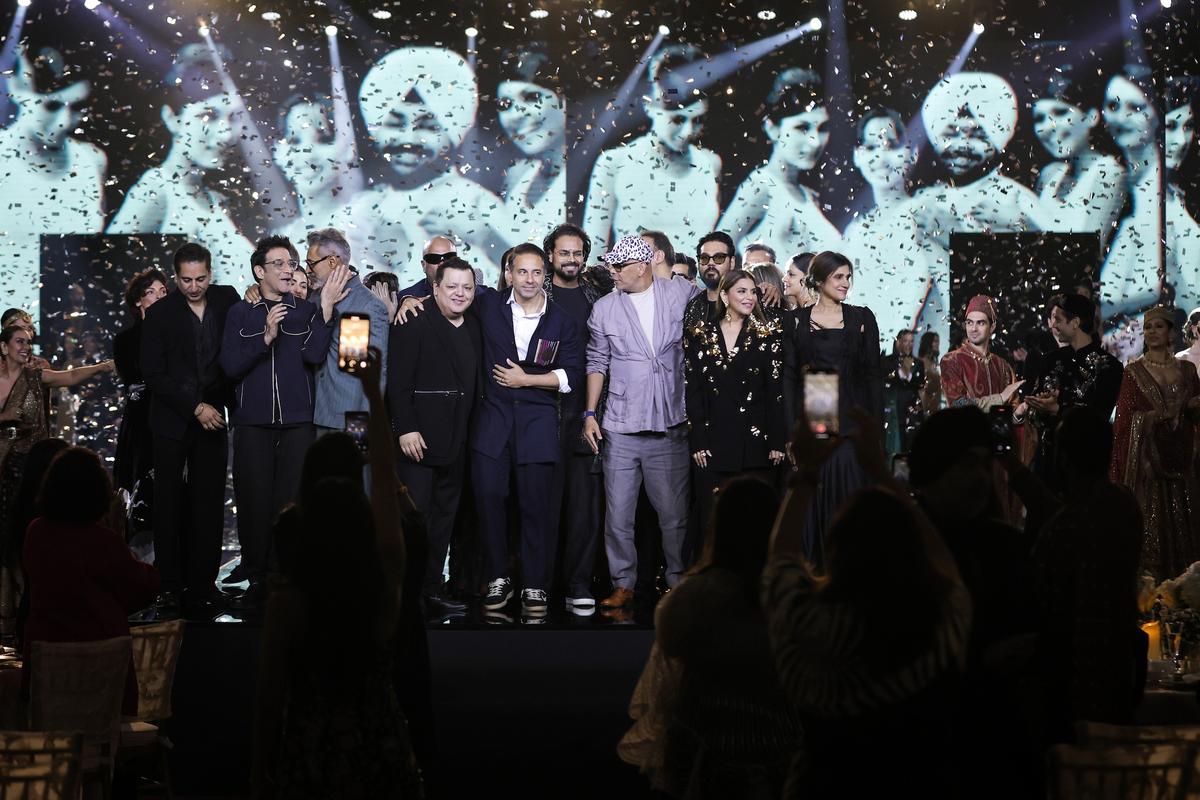
The designer line up
| Photo Credit:
Courtesy FDCI x Lakme Fashion Week

“We need to operate as an industry, and not as individual entities, if we want the fashion week format to grow. Brands must commit to show as part of the official calendar consistently, year after year — just as is the standard at international fashion weeks.”Rahul MishraFashion designer
Looking back
“I lived this show for the last three months, combing through, recreating, and reworking these archival pieces,” shared senior stylist Gautam Kalra, who worked on the gala show. It was not just nostalgia; Kalra and the designers revisited a time when Indian fashion weeks weren’t as heavily bridal-focused. True fans will remember Tahiliani’s jewelled T-shirts and Malini Ramani’s all-year-round resort glam.
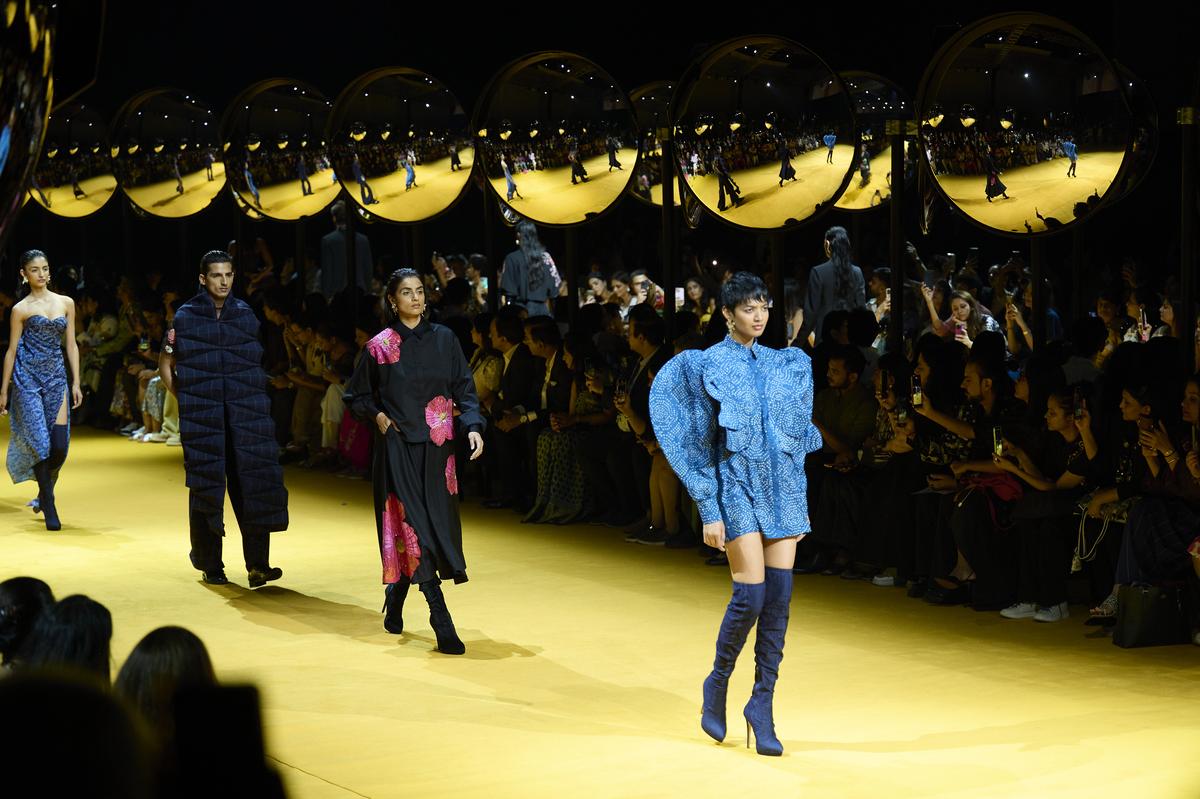
Rahul Mishra’s show
| Photo Credit:
Getty Images
The selected pieces were glamorous, and in some cases, recreated from memory because many designers haven’t maintained formal archives. It was fascinating to witness early experiments, such as the now-ubiquitous breastplate by Suneet Varma, or the cheeky throwback to the gold sling Manish Malhotra originally designed for Shah Rukh Khan in 2009 — a functional accessory from when the superstar agreed to close the LFW show with a fractured hand. Equally special was seeing archival lehengas from the doyenne of Indian fashion, Ritu Kumar, who rarely opens up her atelier to the fashion crowd.
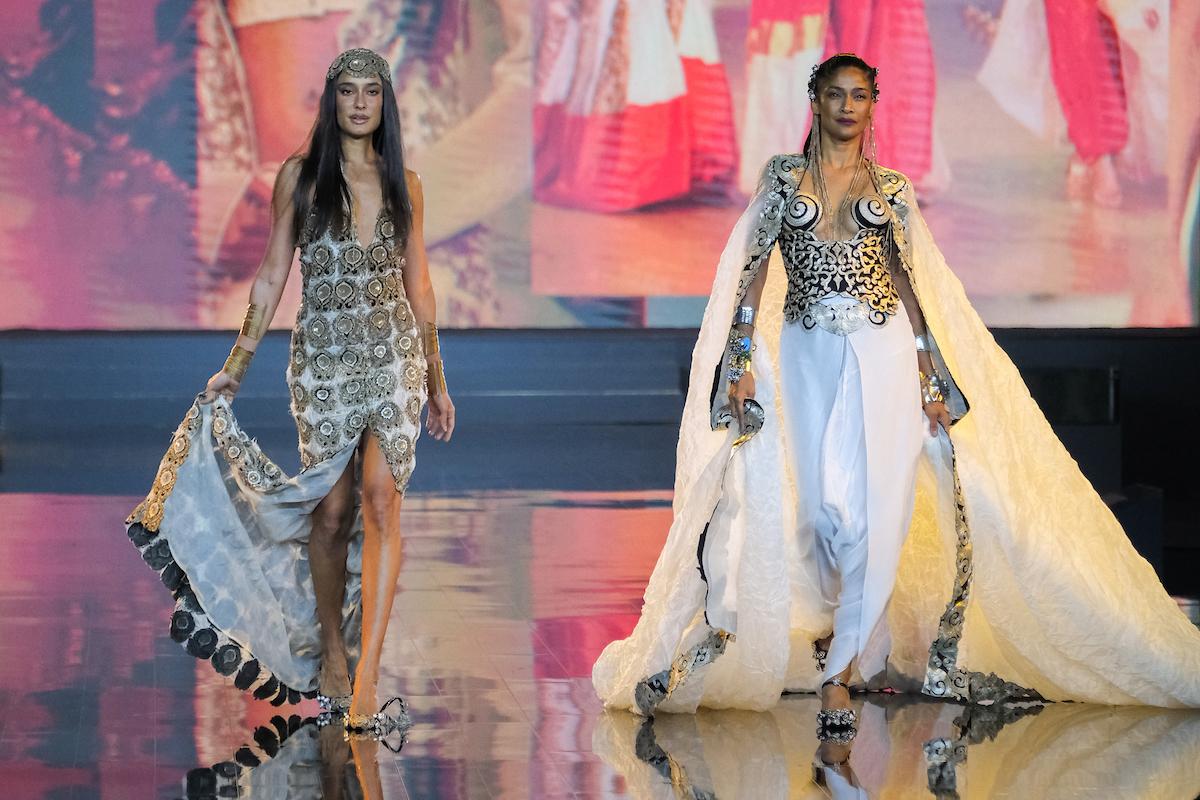
Anamika Khanna’s designs
| Photo Credit:
Courtesy FDCI x Lakme Fashion Week
Business of runways
Over the years, questions have routinely popped up about the relevance of fashion weeks: some find the format ineffectual for international buyers, others are finding more opportunities in newer platforms, and a few are disenchanted with sponsorship and everything that comes with it. “The promise of fashion weeks from say 15 years ago has been somewhat eroded since social media, influencer culture and the undue importance given to Bollywood showstoppers. Shows still need to be critically evaluated,” veteran couturier and FDCI founding member Tahiliani — who in 2003 became the first Indian designer to showcase at Milan Fashion Week — minces no words.
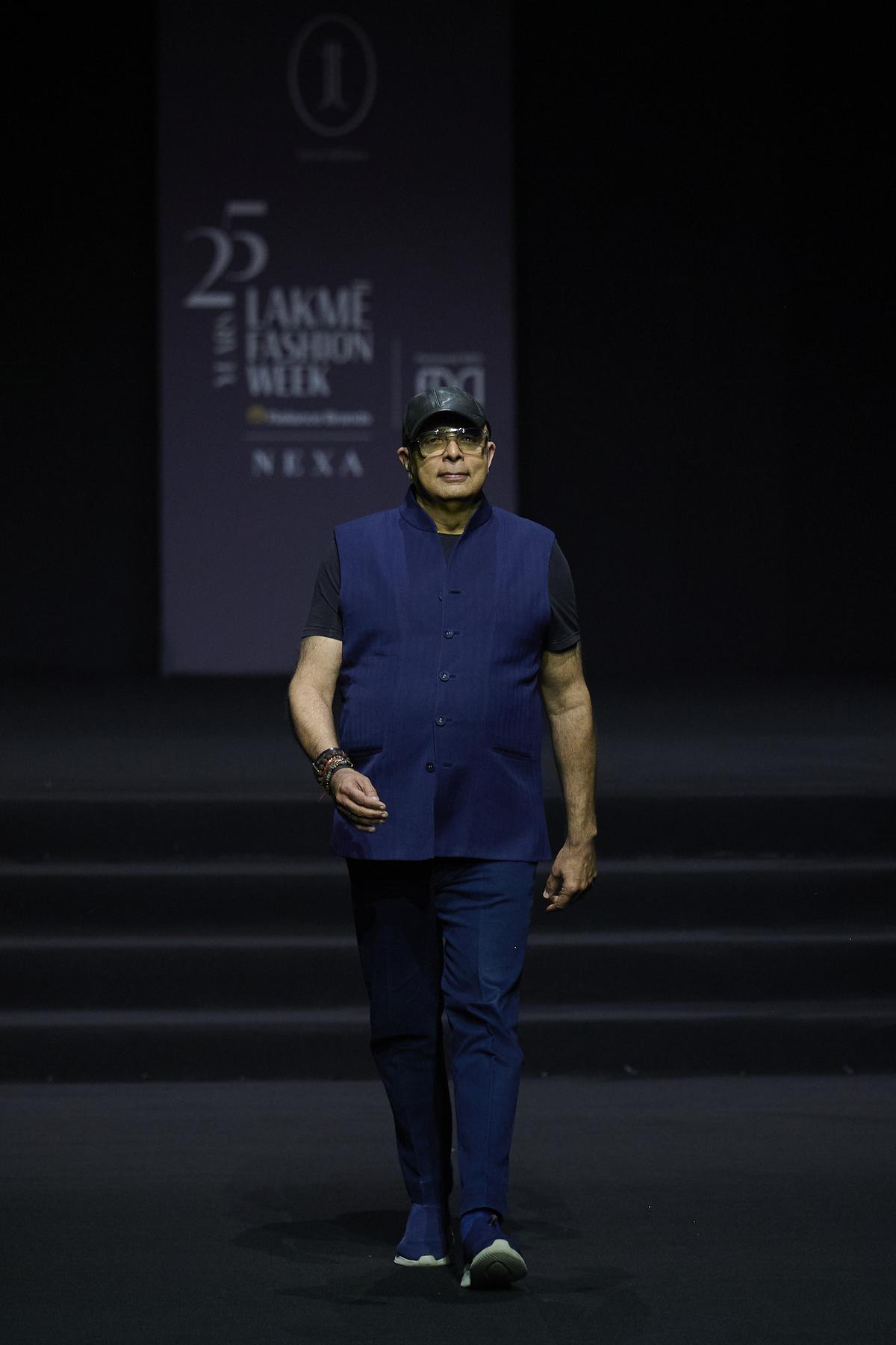
Designer Tarun Tahiliani at Lakmé Fashion Week 2025
| Photo Credit:
Getty Images
But Sunil Sethi, founder of FDCI, says, “Year on year, we have a waiting list of over 60 brands that want to be a part of the showroom or stalls. If fashion weeks didn’t generate business, we wouldn’t still have this rush.” He points out that a designer would have to spend ₹30 lakh to create impact with their own campaign or show, but a single fashion week show (₹6.5 lakh for a solo, ₹4.5 lakh for a dual, and just ₹2.5 lakh for a triple slot) offers brands models, make-up artists, choreographers, stylists — and that’s not even considering unparalleled publicity, content creation opportunity, and sales.
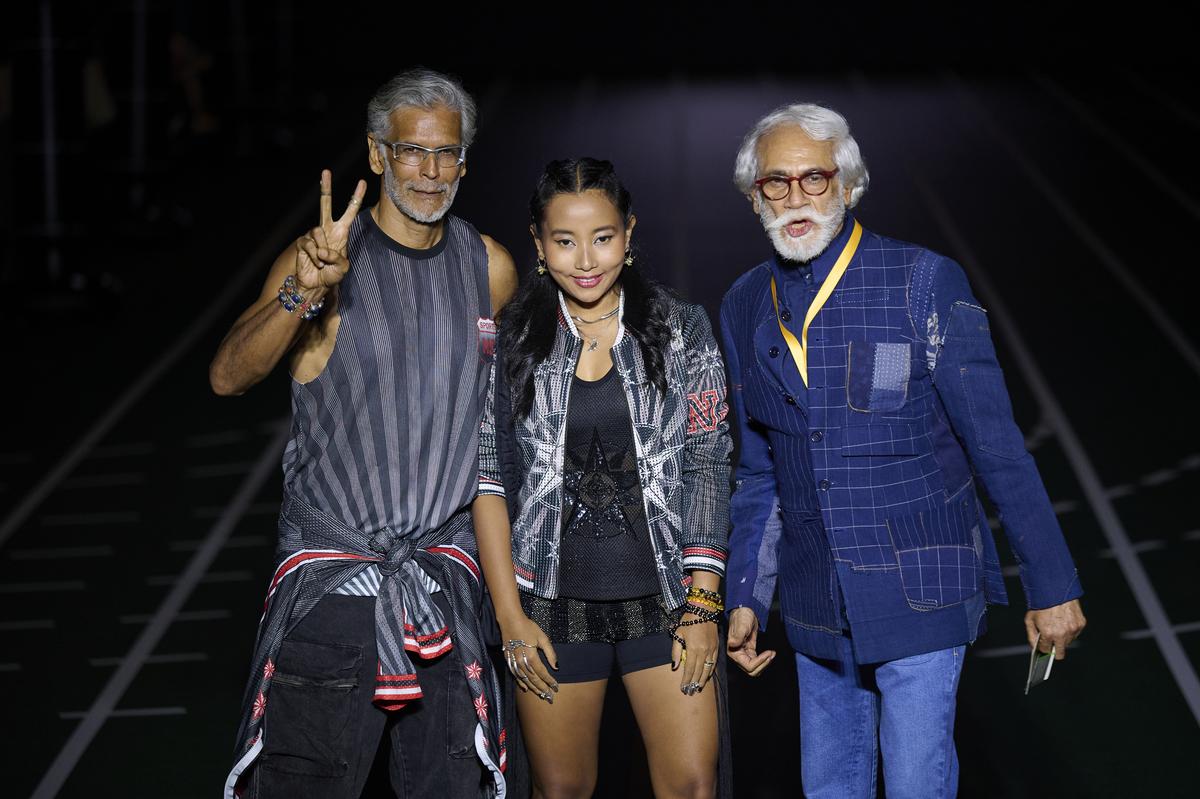
(L-R) Milind Soman, Ankita Konwar and Sunil Sethi at designer Namrata Joshipura show
| Photo Credit:
Getty Images
“In the early 2000s, designers only did business of ₹1 crore; in the last year, independent designers with no corporate backing have done a total business of ₹20 crore with us,” he says, adding that designers must use fashion weeks as a springboard — to showcase at national and international platforms as well as trade shows.

“Tightly edited collections with a serious POV is the way to go ahead”Tarun TahilianiCouturier
Consistency is key
Young designers such as Dhruv Kapoor, who has been consistently showing at Milan Fashion Week since 2022, are focused on business growth, too. “Moving forward, India needs to refine its buying patterns and move away from the consignment model,” he says. “Young brands struggle under this format financially — at a juncture when cash flow is of extreme importance for growing brands. Collections should be purchased outright, and multi-brand outlets [MBOs] should invest in promoting new products.”
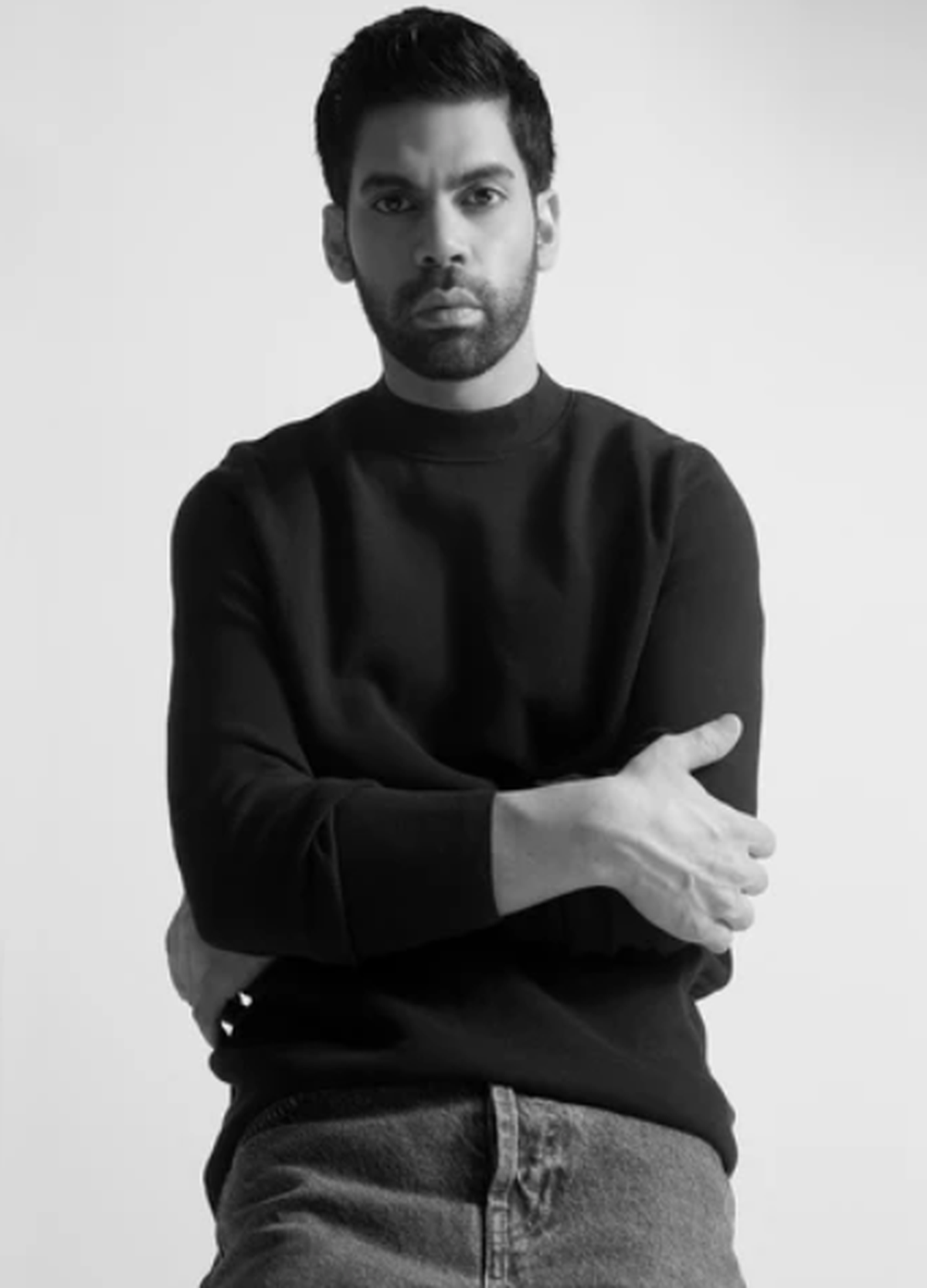
Designer Dhruv Kapoor
Kapoor also emphasises the distinction between heritage clothing and ready-to-wear collections. “Inviting international buyers to see exquisite heritage garments makes little sense if they have no market outside the NRI audience. If India wants to establish a global presence, its products must be tailored for international retail.”
It is a sentiment that embroidery wizard Rahul Mishra understands all too well. “We need to operate as an industry, and not as individual entities, if we want the fashion week format to grow,” he says, insisting that brands must commit to show as part of the official calendar consistently, year after year — just as is the standard at international fashion weeks. A regular at Paris Fashion Week for 11 years, Mishra acknowledges that despite the global platform he enjoys, Indian fashion weeks remain impactful for his business.
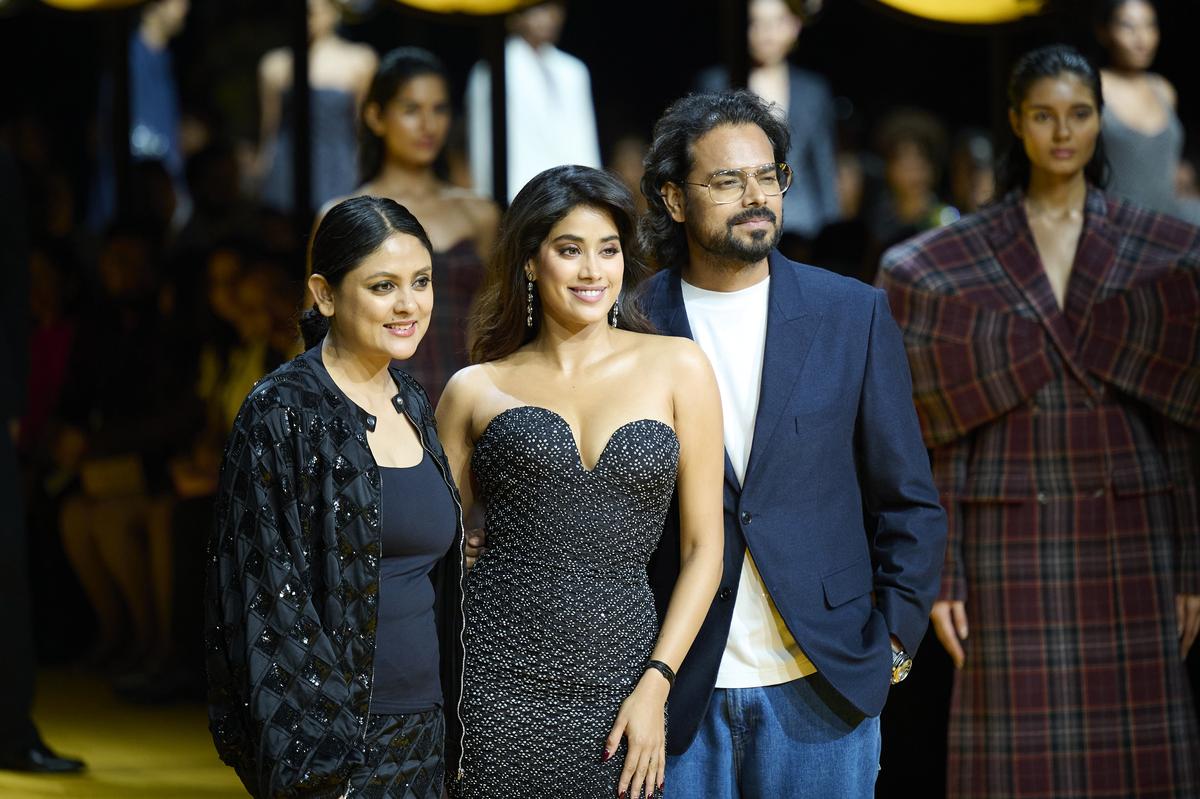
Rahul Mishra (right) with Janhvi Kapoor (centre) at Lakmé Fashion Week
| Photo Credit:
Getty Images
“By 2030, I hope they will garner the same level of attention from international buyers and media. There’s no denying the role of sponsors in subsidising shows for us in the country, but as our industry matures, we need more subtle and creative ways to collaborate with them — so that clothes and shows can still maintain their integrity.”
There are many practicalities to consider, too. According to Kapoor, while a lot has been formalised under industry seniors, emerging designers still require guidance on fundamentals — be it line sheets (a catalogue-like sales tool for buyers), standardised quality control, production, and shipping documentation. “These are crucial elements of building a brand, yet many designers are left to navigate them alone.” While prestigious design schools may teach the basics, fashion weeks remain the true testing ground.
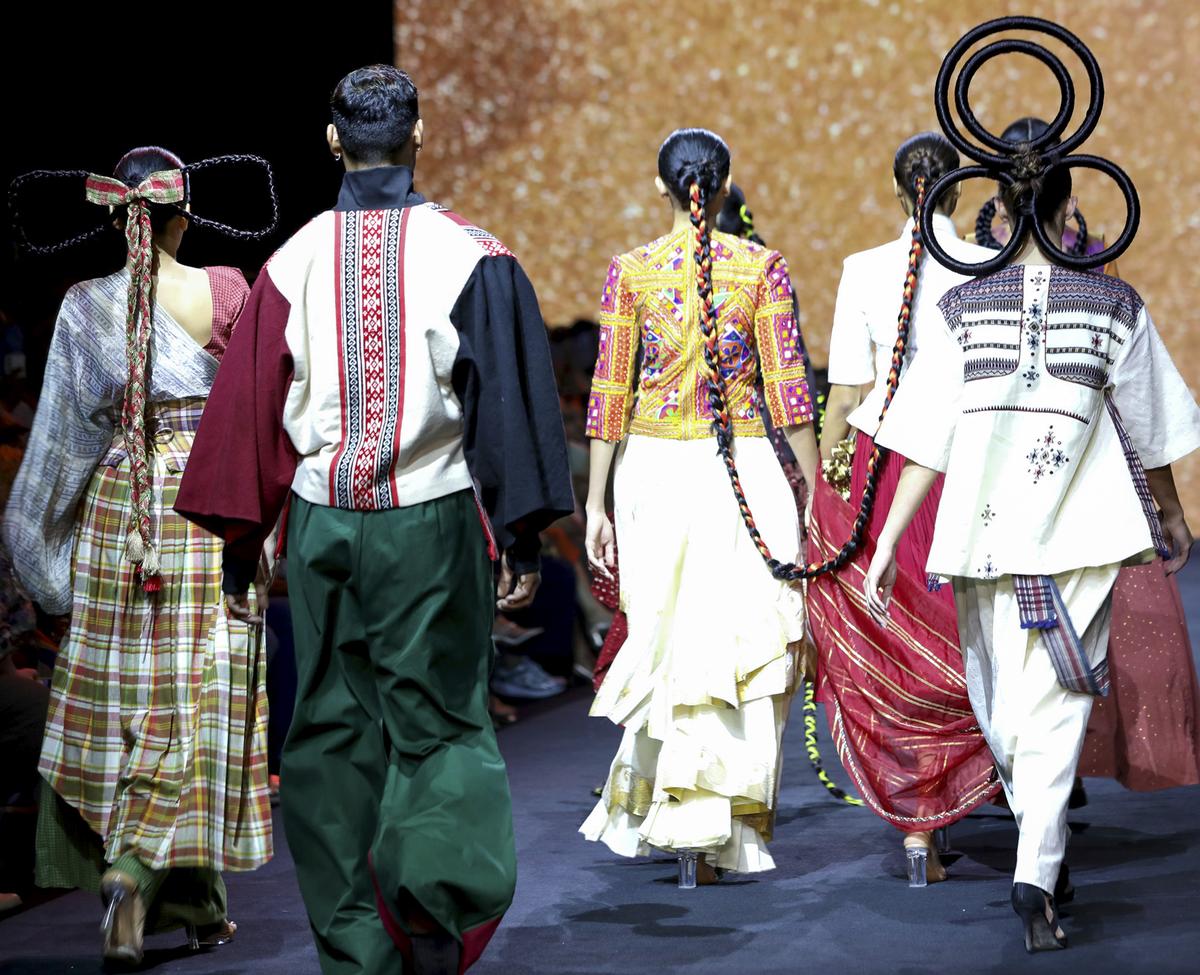
Models present creations by FDCI x Pearl Academy
| Photo Credit:
PTI

“Moving forward, India needs to refine its buying patterns and move away from the consignment model. Young brands struggle under this format financially — at a juncture when cash flow is of extreme importance for growing brands. Collections should be purchased outright, and multi-brand outlets [MBOs] should invest in promoting new products.”Dhruv KapoorFashion designer
The question of why
“Indian fashion weeks, now more than ever, serve a deeper purpose. They are, and should be, a platform for cultural ideas that prioritise the local over the global,” says Bandana Tewari. Hailing from Sikkim, the culture journalist and sustainability advocate has witnessed first-hand how brands committed to indigenous practices uphold the integrity of their origins. “The new generation of designers are storytellers — not just of products but of immersive cultural experiences. They did not grow up in an era of globalisation and homogenisation. Instead, their work engages with the ‘invisible’ people in the supply chain, the time-intensive processes, and the deeper purposes of creativity.”
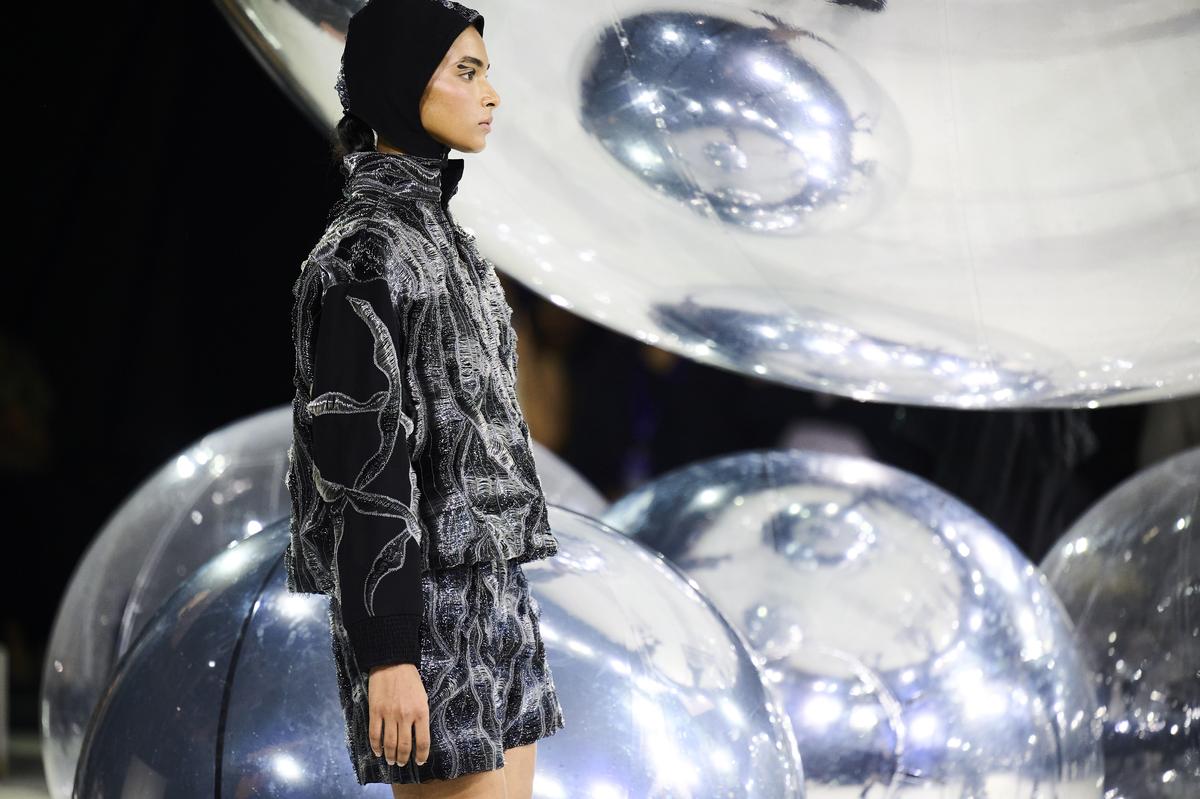
A model presents a collection by Somya Goyal
| Photo Credit:
Getty Images
Reliance’s Chandok, for instance, has categorically supported young talent, textile-forward designers, and artisans, and was greatly responsible for reuniting India’s fractured fashion week platforms.
Embracing the future
Indian fashion weeks have given us unforgettable moments: Katrina Kaif as Barbie, Akshay Kumar’s infamous Levi’s unbuttoning by Twinkle Khanna, and a very pregnant Kareena Kapoor Khan walking a Sabyasachi show. Including Bollywood showstoppers is a practice our industry can’t quite shake off, given its guaranteed return on investment. But designers have also delivered thought-provoking showcases: Kallol Datta’s no-front-row experiment in 2016, Rohit Bal’s Kashmiri poetry under a crescent moon at Quli Khan’s tomb in 2014, and Antar-Agni’s groundbreaking menswear debut in 2014 with its fluid and draped silhouette.
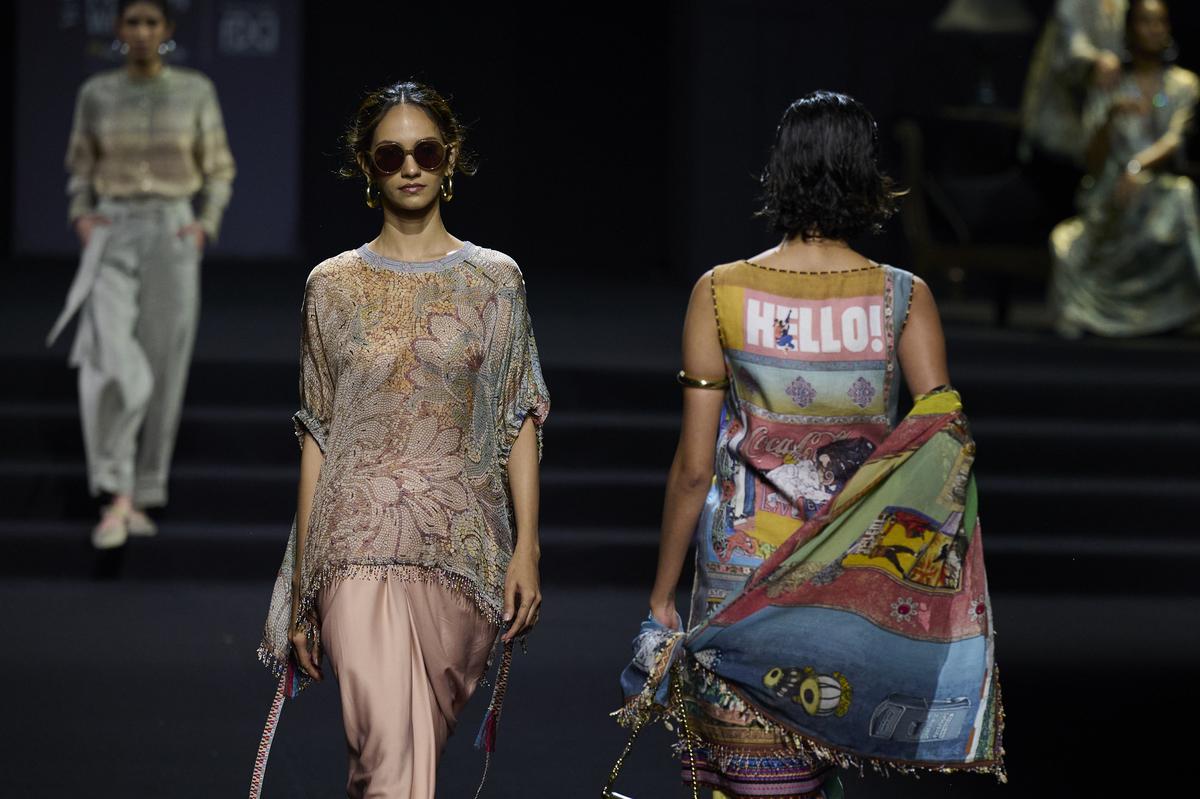
Models present a collection by Tahiliani
| Photo Credit:
Getty Images
As the Indian industry matures, many of its original tastemakers may have stepped away — or return only for special shows. The focus has shifted to sustainability, and distinctive design languages. Nostalgia has served its purpose. Now, it’s time to move forward.
The writer is a Mumbai-based fashion stylist.
Published – April 06, 2025 11:30 am IST



































